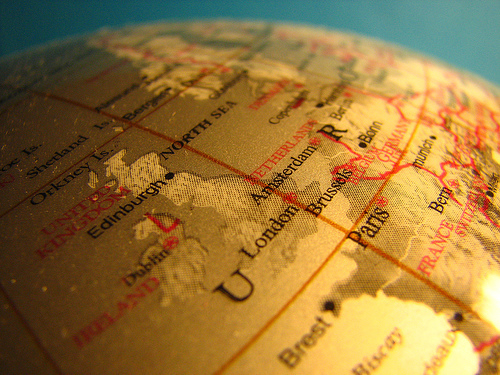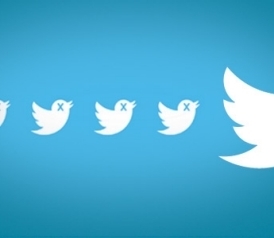Engagement Science: Making the Most of Your Social Media Strategy (Infographic)
See on Scoop.it – MARKETING, MEDIA and MORE
Social engagement is both a science and an art. I analyzed data from over 100 companies of all sizes to determine the best ways to maximize social engagement. The findings are telling; for instance: did you know that posting to three or more channels increases engagement by over 40%? Or that posts on Saturday received more engagement than any other day of the week?
Check out the infographic below for more insight into the science of engagement, and pick up my book Stand Out Social Marketing: How to Rise Above the Noise, Differentiate Your Brand, and Build an Outstanding Online Presence for a complete guide to maximizing your social media returns.
See on www.business2community.com
Looking Back: 5 Hot Social Media Trends of 2012
See on Scoop.it – SOCIAL MEDIA SCENE
You can’t ignore social media. Well, you can, but do so at your peril.
As we all know, business are increasingly turning to social media to build brand loyalty, connect with customers, and gain free public exposure.
The rewards can be great but, despite this, many businesses remain tentative about diving into the turgid waters of social media.
And yes, creating a social media campaign is a little like whitewater rafting; the medium is fluid, unpredictable and ever-changing.
To help you navigate the wild rapids of social media, here are five trends of 2012 that look set to stick around (or at least stick around as long as social media trends can).
See on www.business2community.com
How Do B2B Companies use Social Media? [infographic]
See on Scoop.it – MARKETING, MEDIA and MORE
Social media can be a useful tool for creating brand awareness, but are B2B marketers using it for demand generation as well?
See on econsultancy.com
Facebook, Twitter, YouTube, Pinterest And The Social Media Revolution [INFOGRAPHIC]
See on Scoop.it – SOCIAL MEDIA SCENE
Social media means business – for brands of all shapes and sizes, in almost every industry and every country around the globe.
In fact, not having a well-defined and professionally-managed presence in one or more social media channels can leave the modern business looking out-of-touch and amateurish. Moreover, these platforms have consistently proven themselves to be powerful tools in the strategic arsenal of marketing and sales departments, and many firms that have been dismissive or short-sighted about the benefits of social media have suffered the consequences.
This infographic takes a closer look at some key statistics, facts and figures from this social media revolution.
See on www.mediabistro.com
20 Stats Every Global Social Media Marketer Should Know
See on Scoop.it – SOCIAL MEDIA SCENE
Read through some interesting data and stats about global social media marketing.
“Social media is a lot like sex. Everyone talks about it. Everyone wants to do it. Nobody knows how.”
That’s a quote from our recent Social Media is a Lot Like Sex deck, and we think that sentiment rings particularly true for companies trying to implement a global social media strategy. I mean, at any moment you could be trying to engage with someone who uses a different social network than you’d expect, speaks a different native language than your company’s, or even has cultural nuances of which you’re unaware. Needless to say, there’s a lot of moving parts.
So what’s a global marketer to do? Well, stop guessing for one — instead, use data to help inform your social media strategies! That’s why we’ve collected 62 stats that help paint a picture of how social media works around the world, 20 of which we’re going to highlight in this blog post.
Plus, we’re going to show you how those stats can be boiled down into some insightful global social media strategies that global marketers might want to consider.
See on blog.hubspot.com
5 Deadliest Marketing Sins
See on Scoop.it – MARKETING, MEDIA and MORE
Sometimes your marketing messages can do more harm than good. Are you guilty of any of these mistakes?
See on www.inc.com
13 Marketing Trends For 2013 | Business 2 Community
See on Scoop.it – MARKETING, MEDIA and MORE
It’s already that time of year when strategic planning and budgeting are in their final stages for 2013.
See on www.business2community.com
I Bought 27,000 Twitter Followers. Was It Worth It?
See on Scoop.it – SOCIAL MEDIA SCENE
I’m a selfish Twitter user. I love scrolling through, letting it alert me to vital news, opinion, and baby mammal GIFs. But, like some 40 percent of all people on Twitter, I prefer consuming tweets to contributing them.
See on www.slate.com









